Lying in the tall weeds next to our field, with the tractor idling a few feet away, I felt the July humidity like a weighted blanket on my chest. We’d been planting for eight hours straight. We had four to go, and the back spasms were slashing through my muscles with such ferocity that I had to take “cry breaks” just to reset.
The tears weren’t only from the physical pain. I was frustrated about the voracious pests, overwhelmed from trying to plant and harvest and pack at superhero speed, anxious about finances, and sad about the customers at the farmers’ market who told me they could get better prices at the big-box grocery store.
As a distraction, I pulled out my phone and checked my email. A subject line reading “Ozkar’s first radish!” caught my eye. The message, from one of our community-supported agriculture (CSA) members, included a picture of a beaming toddler triumphantly holding up the remnants of a few greens.
The final result of a seed we’d selected eight months before, the radish had been an organic variety that would thrive in our Midwestern soil. We planted, weeded, watered, harvested, packed, and delivered that radish. And because we did, Ozkar gave it a shot and discovered a vegetable he may love for the rest of his life. My tears changed then — to ones of gratitude, humility, and pride.
This is small-scale farming.
Honestly, it can break you. Physically, definitely. But also financially and mentally. Climate change is wreaking havoc on farms; crop insurance and government subsidies are rarely enough to cover the damages (really small farms don’t even qualify for them). In some states, the suicide rate among young male farmers is higher than that of military veterans; both are notably higher than the general population. And this reflects a global trend.
Big-box stores buy conventional produce in high volumes, often from multinational companies that pay farmworkers appallingly low wages. It’s yet another reason those prices in supermarkets are so low.
Meanwhile, most small-scale and family-farm households include at least one family member who works a second job to cover basic expenses.
But farming can build you, too. It connects you to all those little Ozkars, to the land itself, to the heritage and history of farming, to legislators and sustainability advocates and fellow farmers, and to yourself. I’ve talked to military veterans who were able to quit PTSD medication after simply putting their hands in fresh earth each day while working the land. I’ve seen older farmers spend hours sharing their knowledge, and their seeds, with eager young interns. Even in the midst of the pain, I’ve grown and flourished in ways I couldn’t have without farming.
Still, it’s a tough life — and harder on some of us than it is on others. There’s so much work to be done: land access, economic stability, mentorship of young farmers, diversity and inclusion, support for regenerative farming practices. The change makers are out there, though. These leading-edge farmers face daily difficulties, yet their passion, resilience, and hope inspire the rest of us to carry on.
The Firebrands
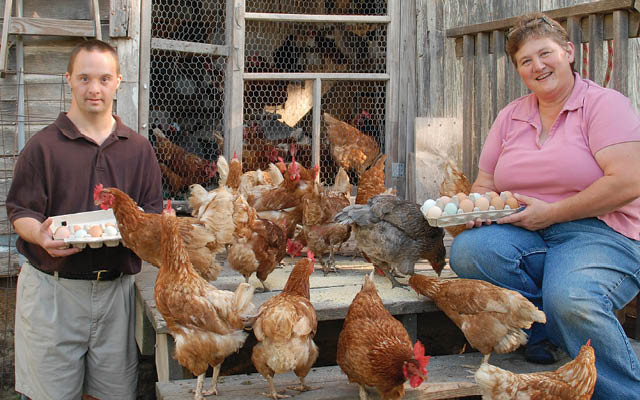
Nick Zeman and Kathy Zeman
Simple Harvest Farm; Nerstrand, Minn.
When Kathy Zeman talks, she covers a lot of ground. You need to listen carefully or risk missing her rich, full laugh and the aphorisms that flow from her mouth like milk from one of her cows.
“You can’t just be a problem identifier in agriculture, you need to be a problem solver,” she says. “That’s why I do everything I can to inform policymakers about what laws need to get changed for the local foodshed. Farming now involves a lot of battles for equity. And I’m here to fight.”
Zeman grew up on a Minnesota farm, one of 12 children. Her world revolved around diversified livestock, and she racked up awards for her cattle-raising prowess. She was even named Princess Kay of the Milky Way at the Minnesota State Fair, where her likeness was sculpted in butter.
When she set out on her own, few single women were farming. She did it anyway, buying land and bringing along her 47-year-old brother Nick, who has Down syndrome.
Together, they now run Simple Harvest Farm, a certified-organic operation. When you go there to pick up some eggs, you’ll navigate around rabbits, goats, sheep, and geese while marveling at lush rows of vegetables.
But Zeman has never been content to simply focus on her own farm. She’s busy developing Minnesota’s Farmers’ Market Association, mentoring young farmers, promoting policies that limit pesticide drift from nonorganic farms, and highlighting the financial challenges that come with farming — especially for young growers. They must invest in equipment, land, greenhouses, seed, and numerous other necessities to get started. Zeman is financially secure, she notes, but she won’t rest until other small-scale farmers can say the same.
“Farming feeds my soul,” she says. “There are challenges, but we can create a just, sustainable, equitable food system, as long as we’re working together for it.”
The Seed Savers
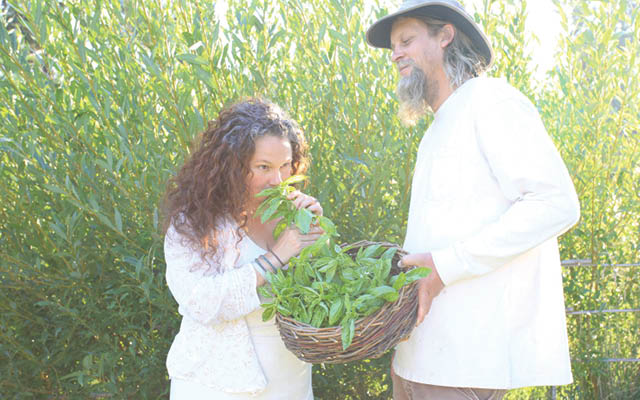
Elise and Jeff Higley
Oshala Farm; Applegate Valley, Ore.
Cupped in your palm, a seed might seem inconsequential. And yet, when it comes to food, it’s everything.
It’s a blueprint for the plant to come, as well as a connection to its mother plant, and grandmother, and back through time. Seeds represent a heritage. If heirloom seeds aren’t planted, however, they don’t propagate, and a lineage can die out.
That’s where seed savers like Elise and Jeff Higley come into play. At their Oregon herb farm, the couple and their dedicated crew don’t wait for seed catalogs to arrive during the winter. Instead, they spend weeks during the fall collecting the offerings of plants that have, literally, gone to seed.
While the Higleys keep seed heritage in mind, Elise says their efforts are also a hedge against climate change. The seeds come from plants that have already been thriving in the Pacific Northwest climate. That means they’ll be hardier when faced with local climate threats like poor air quality — due to wildfires — and record rainfalls.
“When the plants start out more resilient and healthier because they’re from seeds that come from here, they can adapt more easily,” says Jeff. “In a way, they’re kind of teaching us to try and be more adaptable as well. You see them thriving, so it makes you more hopeful about weathering change.”
And as medicinal plants begin to dwindle in the wild because of overharvesting, habitat loss from fires, and land development, their soil can accommodate them.
For Elise, planting what was once mainly wild — like Saint John’s wort, plantain, and burdock — maintains the availability and quality of these healing plants.
It also ensures Oshala Farm can offer sustainably grown herbs to its online customers at a reasonable price. Everything grown on the farm is organic, but finding medicinal-herb seeds that comply with organic standards and thrive in the Oregon climate can be daunting. Saving their own organic seeds lowers their upfront costs and allows the Higleys to grow crops that may not be commercially available.
Most of all, Elise says, they’re continuing a long tradition for each plant, with regenerative cultivation practices. “We consider ourselves stewards of this land, of these plants, and of our community,” she says. “We do everything thinking of the generations to come.”
The Legacy Builder

Kelsey Keener
Sequatchie Cove Farm; Sequatchie, Tenn.
Tucked into a Tennessee valley, next to a river winding alongside rows of gorgeous vegetables, Sequatchie Cove Farm features four generations working the land. A 2-year-old future farmer pulls weeds next to her 92-year-old great-grandfather.
Still, it hasn’t always been a family endeavor, says Kelsey Keener, who represents generation No. 3.
“My grandfather just wanted land to retire on, but then my parents got involved,” he explains. “My kids are the first generation to actually be born and raised here.”
Keener’s father, a former special-education teacher, is passionate about sustainable agriculture, and Keener’s mother is a horticulturalist, so both were attracted to farm life.
Yet the effort to deepen the family’s roots at their picturesque riverside location is now continually challenged by the effects of climate change.
“It’s almost predictable how unpredictable every year will be,” says Keener. “We go from long spells of drought to intense flooding. We can have a muddy disaster for months, and then over 90 days with no rain at all. If you want to know what it’s like to deal firsthand with climate change, talk to a farmer.”
To adjust, the farm has adopted methods that include permaculture, a set of design principles that maximizes the stability and diversity of an ecosystem. In contrast to monocropping — growing a single commodity crop on flattened fields that are left bare all winter — permaculture works with the natural contours of the land to reduce water usage, and cover crops are used to feed and protect the soil during the winter.
At Sequatchie Cove, dairy cows provide manure for the compost that covers the vegetable beds. The milk becomes luscious cheese that’s shipped around the country. The farm produces pasture-raised meats and eggs, too. That diversity of products creates multiple income streams, Keener explains. But most of all, this approach benefits the land.
“Diversification is key for sustainability,” he says. “When you have large-scale farms with only one type of livestock, for example, those are an environmental disaster. They become a source of hazardous waste, instead of having animals that are part of a thriving, robust farming ecosystem.”
When people understand how much love goes into this type of farming, he says, they can form a relationship with a grower that is supportive in many ways — for a farm’s economic outlook, and for a community’s well-being.
“What people really want is to know about their food, and to feel connected to the people growing it,” he says.
“You can get organic produce on Amazon now. But what you can’t get is this relationship. Having steady, loyal customers can make a huge difference to farms like ours. That’s what allows us to keep doing what we do.”
The Urban Grower
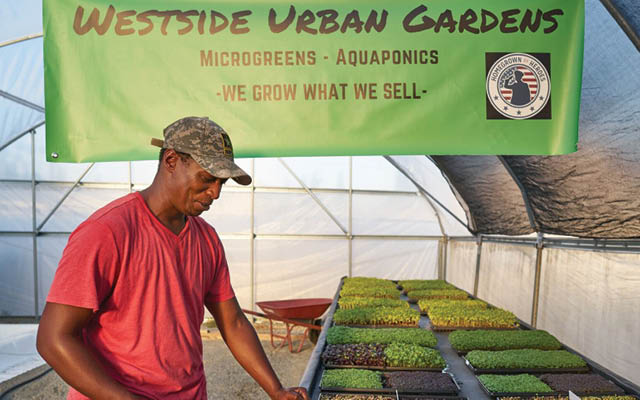
Nate Looney
Westside Urban Gardens; Los Angeles
Looking out over his front yard in the middle of Los Angeles, Nate Looney usually has the same thought every morning: My neighbors are going to eat well today.
He didn’t begin with that kind of agricultural mindset. Born into a family with a rich farming history — his great-great-grandfather, whose parents were freed from slavery, cleared acreage in Louisiana that family members still farm today — Looney grew up in Los Angeles and sought a different path. Joining the National Guard, he helped evacuate victims of Hurricane Katrina and later deployed to Iraq.
After leaving the military and changing his gender, he earned a degree in business and began to feel his family’s deep farming roots tugging at him. Looney had seen the devastation of a major natural disaster and observed the food insecurity here and abroad; he was suddenly lit up with hope for urban agriculture.
“When you look at trends in the food system, there’s such potential to help the world through innovative thinking,” he says, adding that climate change is a daunting challenge.
In Los Angeles, for example, drought and wildfires loom large. That’s why Looney founded Westside Urban Gardens, which first started growing microgreens and lettuces inside a sizable greenhouse, where he could carefully control water, light, and air quality. His system used hydroponics, a type of farming that recycles about 70 percent of the water used on plants.
“Think about the shift toward urban living and what people in cities need,” he says. “You have to implement a sustainable, climate-change-resistant strategy, and I think we’re going to see numerous efforts in the future that take advantage of indoor growing and that significantly reduce water usage.”
Those efforts can be expensive, especially in a place like Los Angeles, where the cost of a single vacant lot can run up to $100,000. So Looney focused on a no-cost land option: other people’s backyards.
He now teaches local residents how to farm for themselves. This puts them much more in touch with seasonal food, he says, and makes them feel more self-reliant. In some ways, it’s a kind of retro revolution.
After all, keeping a home garden was once common, even in urban centers. During World War II, Americans planted an estimated 20 million “victory gardens” (meant to conserve resources and support the war effort) that produced about 8 million tons of food — more than 40 percent of all the vegetables and fruits consumed in 1944.
Looney has planted his entire front yard and backyard with edibles, and he sets out 10 to 15 pounds of produce on his front step every day, free for the taking. It’s gone within a couple of hours.
“I do believe that innovation and technology will make a major difference in the future for farming,” he says. “But there’s also a place for that community connection, neighbor to neighbor, where you share your bounty.”
The Tradition Keeper
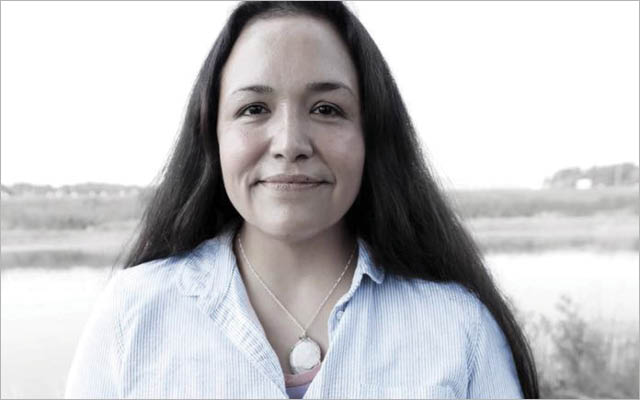
Jessika Greendeer
Dream of Wild Health; Hugo, Minn.
“What I love about Dream of Wild Health is the focus on growing food for our Native communities. But it’s more than that, because what we do creates a ripple effect in many ways,” says Jessika Greendeer, the farm’s seed-regeneration manager. “It’s about healing the earth and thanking her for what she’s provided for thousands of years. It’s about helping take care of her.”
Created in 1998, Dream of Wild Health grew out of a program designed to provide transitional housing and services for homeless and chemically dependent Native Americans. Participants wanted to reconnect with their traditions, including Native foods and medicines, and the farm was born.
It’s now a 10-acre, intertribal, nonprofit resource that teaches Native American youth about their culture through gardening and cooking indigenous foods, some grown from a collection of rare seeds saved by a Potawatomi elder.
Greendeer is the keeper of these traditions, but she wasn’t always so convinced it was a worthy calling. As a youth, she reluctantly helped her parents and grandparents with their home gardens, but she thought she’d put gardening behind her after joining the army.
Then her father, dying of colon cancer, spoke to her about the food system and how disconnected and unhealthy it had become. “That did it for me,” says Greendeer. “I wanted to learn how to change this, especially for my tribe.”
After going through a farmer’s training program for veterans, she worked for her tribe, the Ho-Chunk, as an agricultural manager and then came to Dream of Wild Health with a clear mission. The farm’s well-established youth programs cover a rich variety of topics, including Native culture and language, food-justice issues, and seed saving.
“The young people here give me such hope for the future, because they are so excited about what we’re growing and the history behind it,” she says. “This isn’t just about Native people; it’s about our collective future, being responsible stewards of the earth.
“Our children are looking to us to make better decisions, and the earth is, too.”
The High Price of Farming
Each farm faces a unique mix of challenges, such as climate change, family transitions, and pest problems, but there is one issue that nearly every small farm wrestles with: money.
The USDA in 2018 reported that the median total household income among all farms was just over $72,000. Yet this number is deceptive, because it averages the income of small farms with giant commodity producers. Just over half of American farms have less than 500 acres and produce annual sales under $10,000. Off-farm jobs produce the bulk of the household income for nearly all smaller-scale-farm families.
Farming is not a 9-to-5 job. Fitting in other paid work is exhausting, and this takes a toll on farmers’ health. Meanwhile, the everyday expenses of farming can wipe out profits in an instant.
During its most profitable year in 2013, our farm, Bossy Acres, served a 125-member CSA and sold produce at four farmers’ markets each weekend, netting about $50,000 from our 5 acres and greenhouse. Because we’d already purchased most of our equipment and rented the land, our expenses — seeds, greenhouse flats, gas, farmers’-market fees, a part-time employee, and utilities — amounted to about $38,000. Our profit for two people working 80 hours a week from March to November was $12,000.
Granted, we were just starting out. The longer a farm operates, the easier it becomes to earn a profit, because the equipment is in place. At the same time, scaling up often means adding employees, which lowers profit.
Not surprisingly, farming communities are rife with depression and suicide. (Estimates vary, but some reports suggest that the rate of suicide for farmers, ranchers, and agricultural managers ranks among the highest of any professional group.)
Although there are plenty of contributing factors, economic uncertainty looms large. How long can anyone work 80 hours a week knowing that one random disaster — a serious injury, for instance, or a tornado — can wipe you out? It’s a question no small-scale farmer should have to answer.
These are some better ones to ask: Does buying from a small-scale farmer really make that much of a difference? Is it worth it to pay more or go out of your way to purchase their products? The answer to these questions is a resounding yes, because any contribution to that trickle of an income stream can be significant. Small farmers work hard. They deserve to make a living at it.
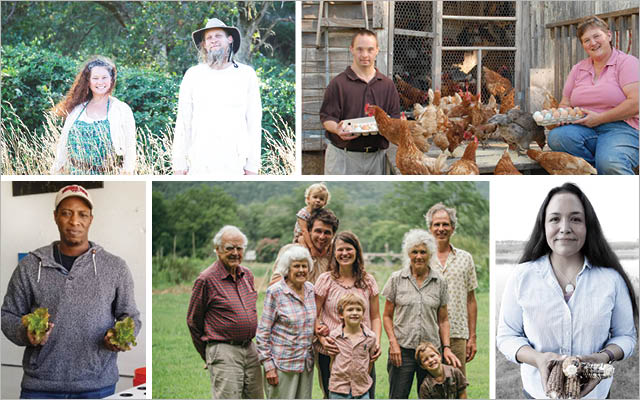


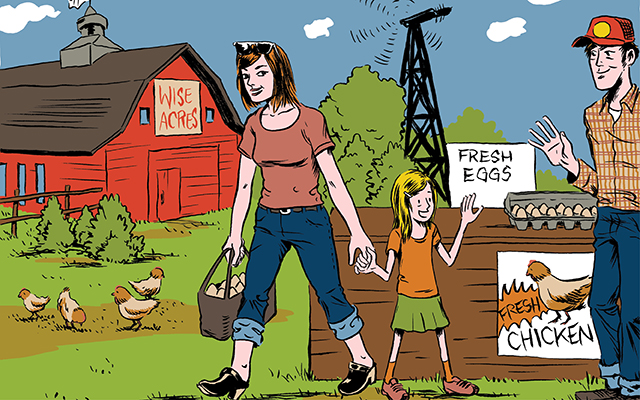
This Post Has 0 Comments